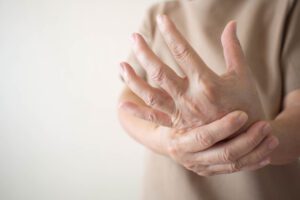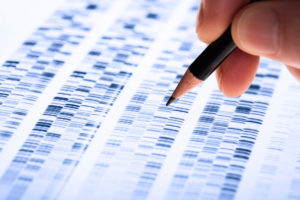Juvenile Idiopathic Arthritis (JIA)
What is juvenile idiopathic arthritis (JIA)?
Juvenile idiopathic arthritis (JIA) proves that arthritis isn’t just a sign of old age. We can break this condition down by word:- Juvenile = young
- Idiopathic = of unknown origin
- Arthritis = inflammation of the joint
- Oligoarticular juvenile idiopathic arthritis
- Systemic juvenile idiopathic arthritis
- Psoriatic juvenile idiopathic arthritis
- Polyarticular juvenile idiopathic arthritis—rheumatoid factor negative
- Polyarticular juvenile idiopathic arthritis—rheumatoid factor positive
- Undifferentiated arthritis
- Enthesitis-related juvenile idiopathic arthritis
What causes juvenile idiopathic arthritis?
The majority of types of juvenile idiopathic arthritis are considered autoimmune disorders. This means that the body’s immune system mistakenly attacks itself—in this case, specifically the joints. The way the body attacks the joints is typically through inflammation at the area, and we do not know why this occurs. It happens regardless of whether the JIA is autoimmune related or not. However, if it’s autoimmune related, that it can also be classified as an autoinflammatory condition as well.How is juvenile idiopathic arthritis diagnosed?
There are a number of tests which can help diagnosis juvenile idiopathic arthritis, as well as provide a differential diagnosis of the type of JIA. But before a doctor gets to tests, they should get detailed descriptions of the symptoms and look at the family history for any sign of JIA or other autoimmune conditions. Laboratory tests typically include blood tests to try and determine if there is inflammation present in the body. The follow tests help the doctor figure out what type of JIA is most likely:- Rheumatoid Factor (RF)
- Antinuclear antibody (ANA)
- Anticyclic citrullinated peptide (anti-CCP) antibodies
What are common symptoms of juvenile idiopathic arthritis?
Even though there are many types of JIA, they all share some common symptoms—specifically pain in the joint. This pain can manifest as swelling, stiffness, inflammation, and/or limited range of motion and usually occurs in the hands, feet, and knees. These feelings can be most noticeable after a child has been asleep (in the morning, after napping), but typically are not present all the time. There are usually periods of time (called remission) where the symptoms decrease or disappear completely before coming back. Many types of JIA are considered systemic, and therefore they have common symptoms besides joint inflammation including:- Skin rash
- Fever
- Swollen lymph nodes
What treatment options are available for juvenile idiopathic arthritis?
While there is no cure for JIA, there are a number of treatments available to treat the symptoms of the disease. These medications are used either alone or in combination to help with pain management:- NSAIDs (Nonsteroidal anti-inflammatory drugs)
- DMARDs (Disease-modifying antirheumatic drugs
- Corticosteroids
- Biologic agents
Where can I find out more about juvenile idiopathic arthritis?
Juvenile Idiopathic Arthritis (JIA) Articles

FDA Approves Tyenne, an Actemra Biosimilar for Autoinflammatory Diseases
Jessica Lynn
March 22, 2024
Read More »

Celiac Disease Could Increase Risk of Rheumatoid Arthritis and Juvenile Idiopathic Arthritis
Jessica Lynn
November 6, 2023
Read More »



Patient Advocate Anna Ellis Discusses Rare Disease Awareness and Drug Development
Patient Worthy Contributor
February 28, 2023
Read More »







